This winter, don’t wait for it to freeze outside to learn about frost! Make your own frost using this simple guide on how to make frost at home!
We live in Texas. That means we get, one, maybe up to three freezing days per winter. When we get snow and ice, we usually just end up playing in it because it is such a novelty.
But although we can’t do snow science and rarely get to do ice science, we can still learn about winter and frost in our own frost-making science experiment for kids! You don’t need freezing weather outside to make your own frost in a can science experiment.
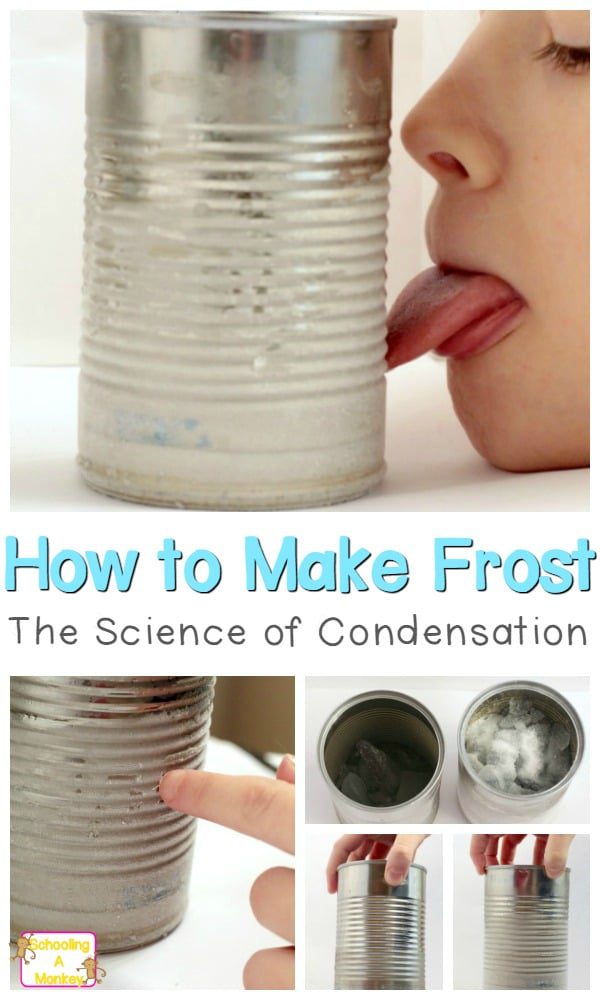
How to Make Frost in a Can
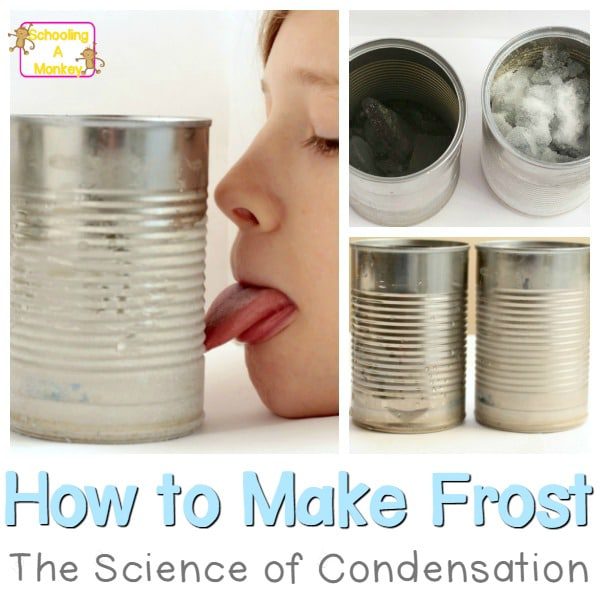
You just need a few ingredients for the frost in a can science experiment!
What you need to make frost in a can:

Disclaimer: This post includes affiliate links for your convenience at no cost to you.
- Aluminum cans (we used bean cans)
- Salt (salt science is our favorite because it is so cheap!)
- Crushed ice
- Play tray (we love this one)
If you’re in a rush, these are our favorite weather science kits.
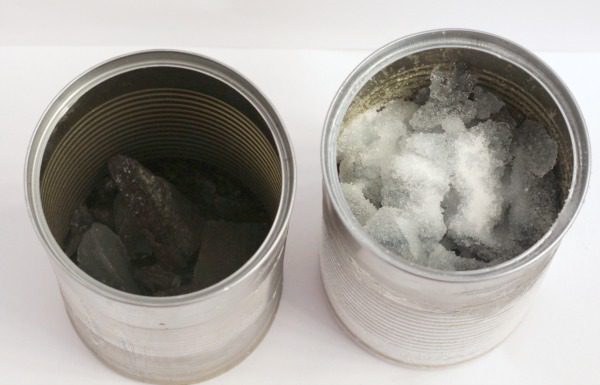
First, I challenged the kids to see if they could come up with how to make frost on their own using ice and our cans. We put just ice in one can, and ice and salt in the other. The kids thought that the can with salt would actually be less likely to produce frost, but as it turned out, that wasn’t the case.
We filled our cans with crushed ice.
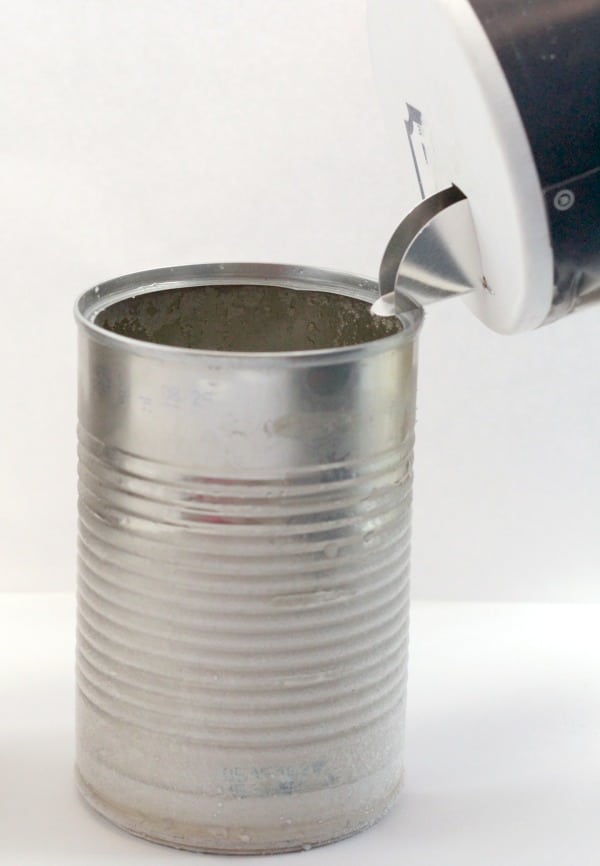
One can was sprinkled liberally with salt. We found the more salt we used, the faster the frost formed.

We gave our cans a shake to see if the frost would form faster. It did!
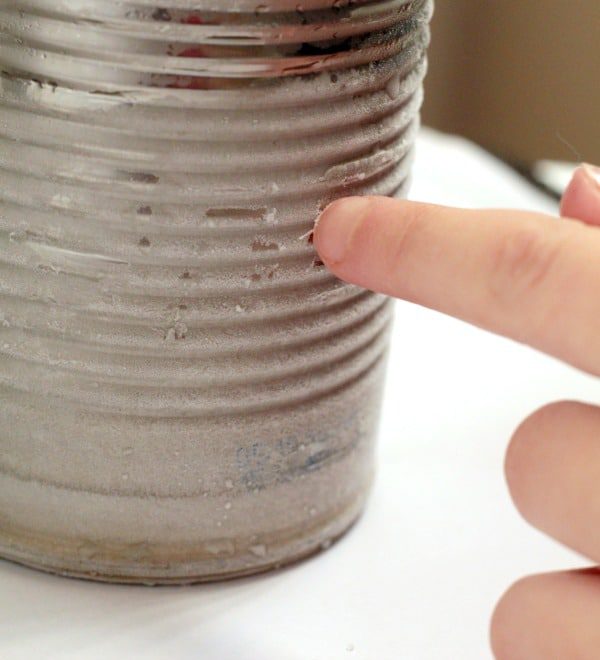
After five minutes, frost was fully formed on the salted can.
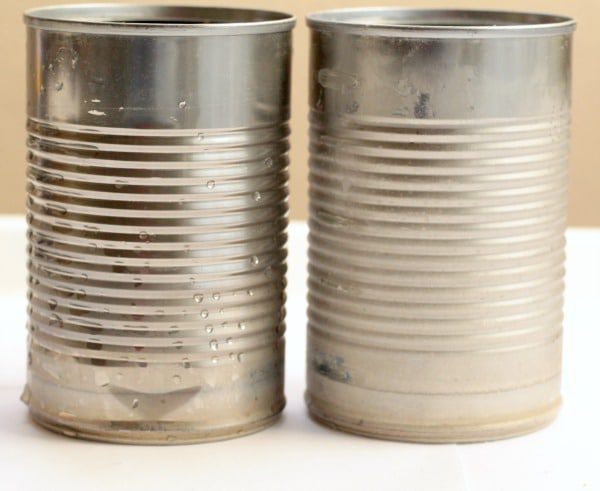
The other can, however, barely even had condensation on the outside.
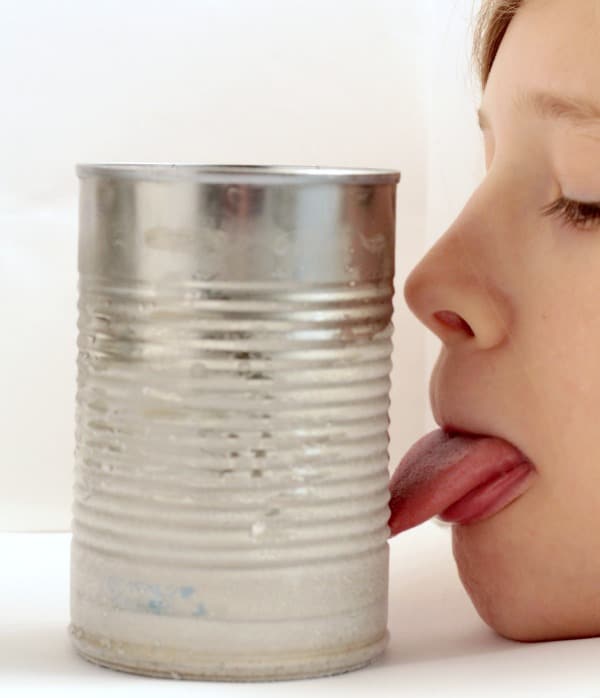
My kids were impressed at how salt could encourage the ice to transform into frost. Monkey thought it would be safe to stick her tongue on the frost, but it stuck! The can really was below freezing! We had to pour extra water on it to get her tongue loose.
Frost in a Can Science

The kids had no idea why salt would make it more likely for frost to form. They had always thought that since we use salt to melt ice on walkways when it freezes, that ice would prevent frost and ice from forming.
But, it turns out that salt lowers the melting point of ice (good for icy walkways). When this happens, the water vapor around the can falls below freezing as well. Frost forms on the outside of the can when the water vapor is freezing.
The can without the salt has a higher melting point that is above freezing. That is why the water vapor only makes condensation and not frost in that can.
from Fruitty Blog https://ift.tt/3eRbMbg
via IFTTT
No comments:
Post a Comment